#41 in Vietnam
Popular Bánh Bao Variations

Bánh Bao Chiên
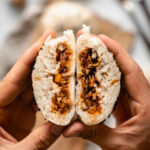
Bánh Bao Chay
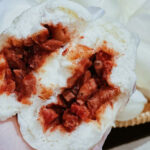
Bánh Bao Xá Xíu
Bánh Bao: Ingredients and Preparation
Main Ingredients
Main Cooking Method
Preparation Process
Bánh Bao: A Deep Dive
Cultural Significance
Taste
Texture
Aroma
Color
Serving Style
Serving Temperature
Accompaniment
Occasions
Seasons
Special Diets
Calories
Popularity
Popular Similar Dishes
- Baozi
- Jjinppang
- Nikuman
Popular Dining Area
Bánh bao is a Vietnamese version of a steamed bun originating from China. Commonly, traditional Vietnamese bánh bao comes with a savory filling of ground pork, Chinese sausage, hard-boiled eggs (chicken or quail), mushrooms, and onions.
Usually, these steamed buns of Vietnam have a larger size than baozi, the original Chinese bun. Aside from the regular meat bun, bánh bao in Vietnam even has char siu or vegetarian fillings, providing various tastes as a street-side item.
In Vietnam, bánh bao is a favorite treat, often available in a steamed variety, to the locals appearing at many street food stalls and shops. Interestingly, locals often enjoy this steamed bun as a breakfast item or as a snack when it’s fried and has a smaller size.
Don’t stop at only knowing about the basic features of bánh bao, as looking into the components of this Vietnamese savory steamed bun and a few different versions is also an interesting experience.
Plus, I’ll also provide you with the methods that bánh bao is made along with the good and bad features of eating it. Afterward, take your time to figure out all the differences between Vietnamese bánh bao and Chinese bao.
Also, let’s learn about the common inquiries that people have for bánh bao and expand your knowledge on dishes that are like thie Vietnamese steamed bun.
Key Points
Bánh Bao Images
What Are Vietnamese Steamed Buns Made of?
In Vietnam, bánh bao combines various ingredients to produce the dough and fillings differently. However, a standard steamed pork bun in Vietnam usually consists of 2 main components of the dough and filling:
Dough:
- Flour: The primary ingredient for the dough’s structure.
- Sugar: To add a touch of sweetness and to feed the yeast.
- Baking powder: For additional leavening and fluffiness.
- Yeast: The leavening agent that causes the dough to rise.
- Vegetable oil: Added to the dough to give it a tender texture.
- Salt: A pinch of salt is added for flavor.
Filing:
- Ground pork: The most common protein used for the filling.
- Wood ear mushrooms: Rehydrated and chopped, they add an earthy flavor and texture.
- Onions: Finely diced for flavor.
- Seasonings: Such as soy sauce, oyster sauce, pepper, and fish sauce, which are commonly used to marinate the filling.
- Hard-boiled egg: Often included in each bun, either as a half or a quarter.
- Chinese sausage (Lạp Xưởng): An optional element for additional flavor.
Once you have known about the basic composition of a bánh bao, don’t shy away from knowing about its many variants in Vietnam.
What Are the Variants of Bánh Bao?
In Vietnam, people often favor the common steamed white bánh bao with a ground pork filling. However, there are still a few variants that come with various fillings and textures:
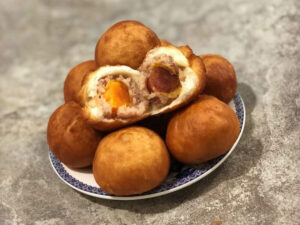
Bánh Bao Chiên
Fried until golden brown, offering a crispy textureHas a smaller size than regular bánh bao
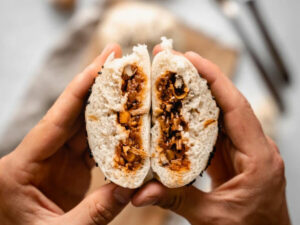
Bánh Bao Chay
Vegetarian version with no animal products

Bánh Bao Xá Xíu
Features sweet and savory barbecued pork filling
Aside from the versions of bánh bao in Vietnam, the methods of making these steamed buns are a crucial part that makes them tasty.
How to Make Bánh Bao?
Vietnamese bánh bao is relatively straightforward, with all the procedures mainly revolving around making the dough and fillings before combining them for steaming:
Step 1: Prepare the Dough
Mix all-purpose flour with sugar, baking powder, and salt; then add warm water and oil to form a dough, knead until smooth, cover, and let rise until doubled.
Step 2: Prepare the Filling
Mix ground pork with soy sauce, oyster sauce, and sugar, then mix in chopped onions and mushrooms before adding hard-boiled egg pieces (or entire quail eggs).
Step 3: Assemble the Buns
Divide the risen dough into pieces, roll it into flat circles, place the filling in the center, and place each bun on a parchment square.
Step 4: Steam the Buns
Set the buns in a steamer with boiling water, steam on high heat until the dough expands and firm, then allow to rest in the steamer for a few minutes before serving.
Step 5: Serve
Enjoy the bánh bao warm, either on their own or with a side of dipping sauce if preferred.
After uncovering the procedures of materializing a bánh bao bun in Vietnam, you should also know about the positive and negative effects that this steamed specialty has when consumed.
Pros and Cons of Eating Bánh Bao
Here are a few features that you should weigh up carefully before eating bánh bao to avoid any unwanted effects:
Pros
Cons
To understand more about Vietnamese steamed pork bun, make sure to also find out about all the features that make bánh bao different from Chinese bao.
What Are the Differences Between Vietnamese Bánh Bao and Chinese Bao?
Bánh bao is a different version when compared to the Chinese version of bao. Here are the features that set these two steam buns apart:
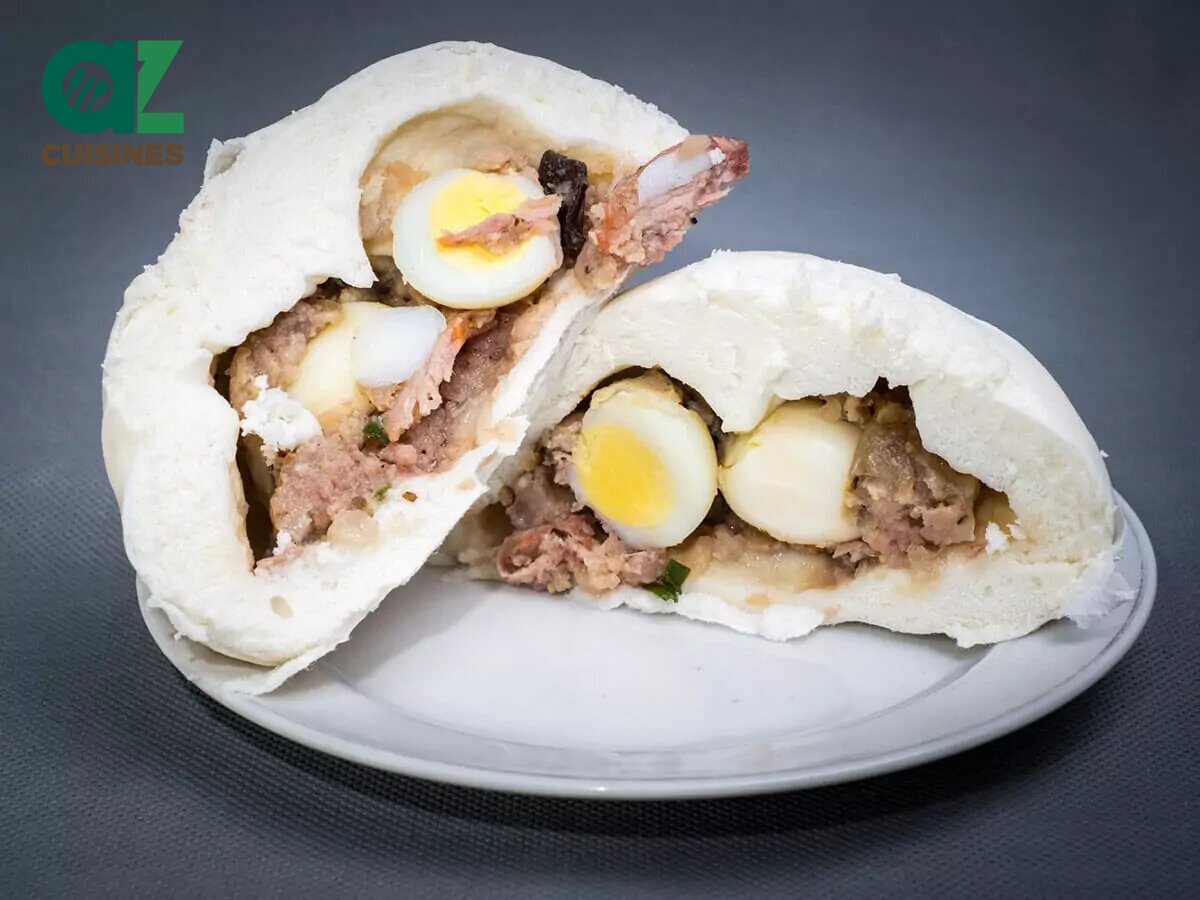
Vietnamese Bánh Bao
Ingredients & Fillings: Typically includes ground pork, wood ear mushrooms, and hard-boiled egg
Dough: Often has a thick layer of dough
Size & Shape: Generally uniform and round, about the size of a large fist, with a pleated top
Serving Style: Often eaten as a complete meal in itself
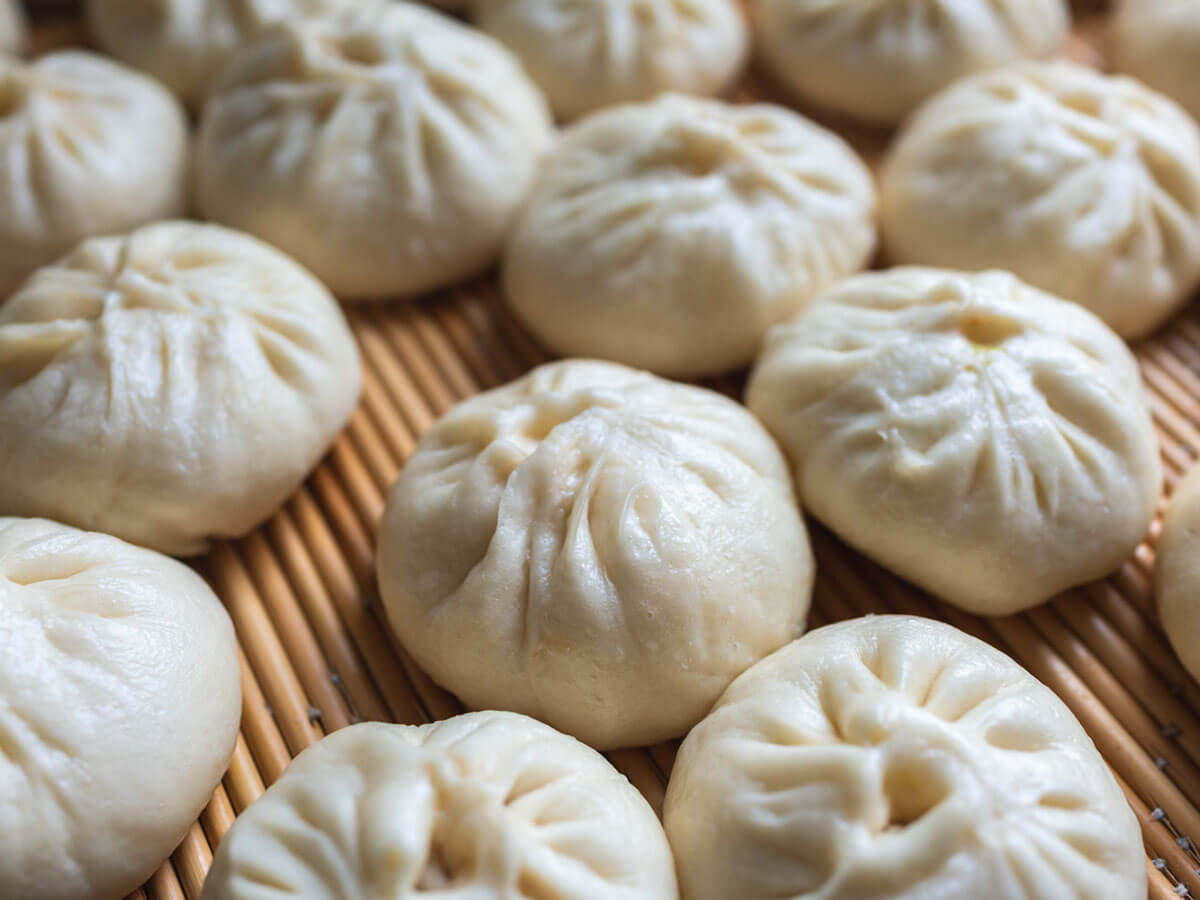
Chinese Baozi
Ingredients & Fillings: Varies widely with regional recipes; includes meat, vegetables, and sweet fillings
Dough: Varies from thin to thick
Size & Shape: Varies in size; shapes can be round, elongated, or folded, depending on type and region
Serving Style: Eaten as a snack or part of a meal, not usually a standalone meal
Afterward, you should learn about some of the common concerns that people have around bánh bao, helping you have a thorough understanding of this steamed bun.



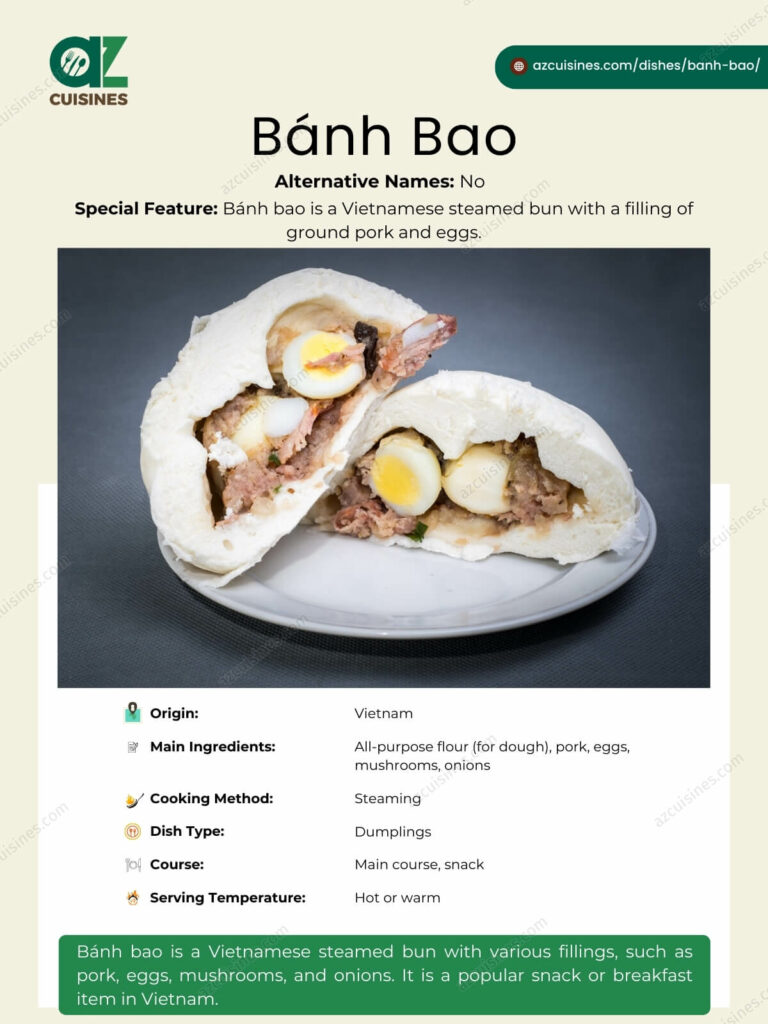
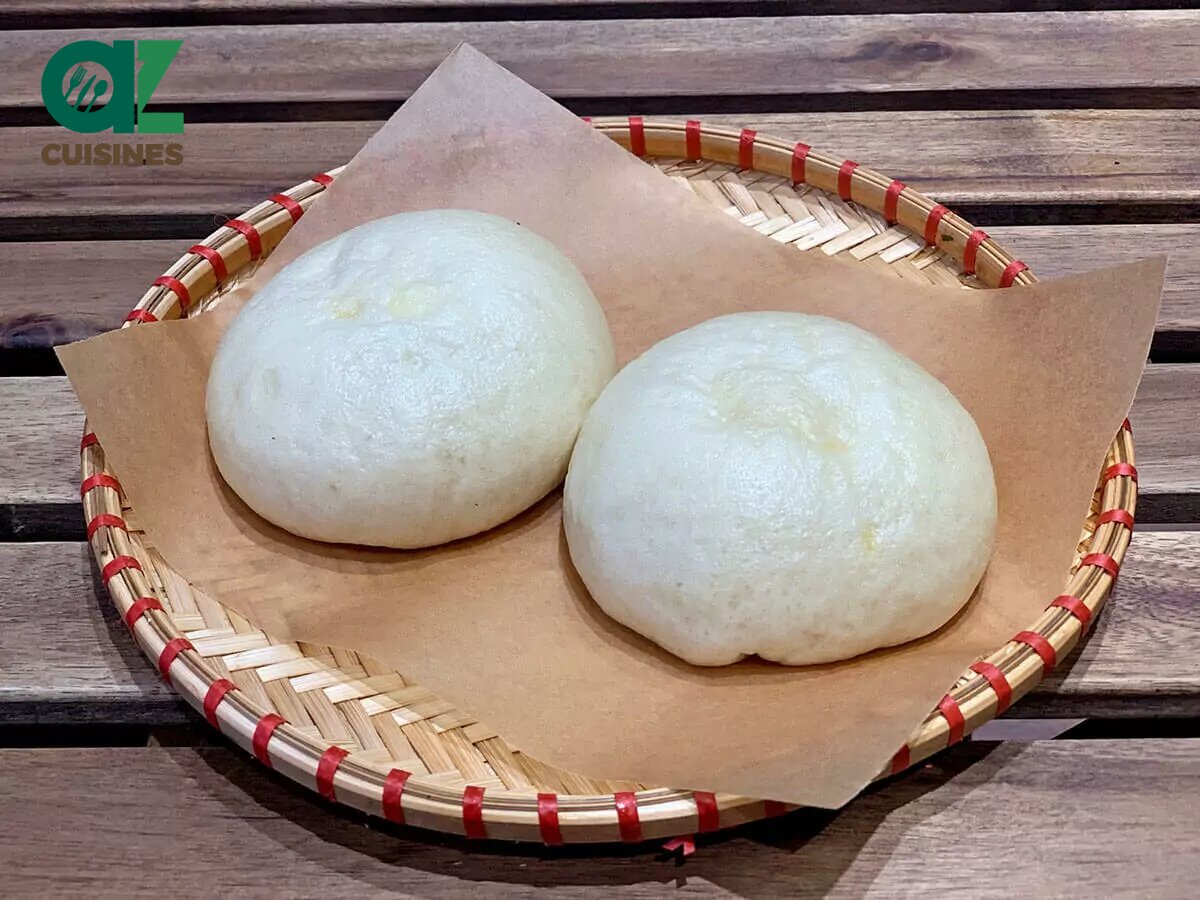
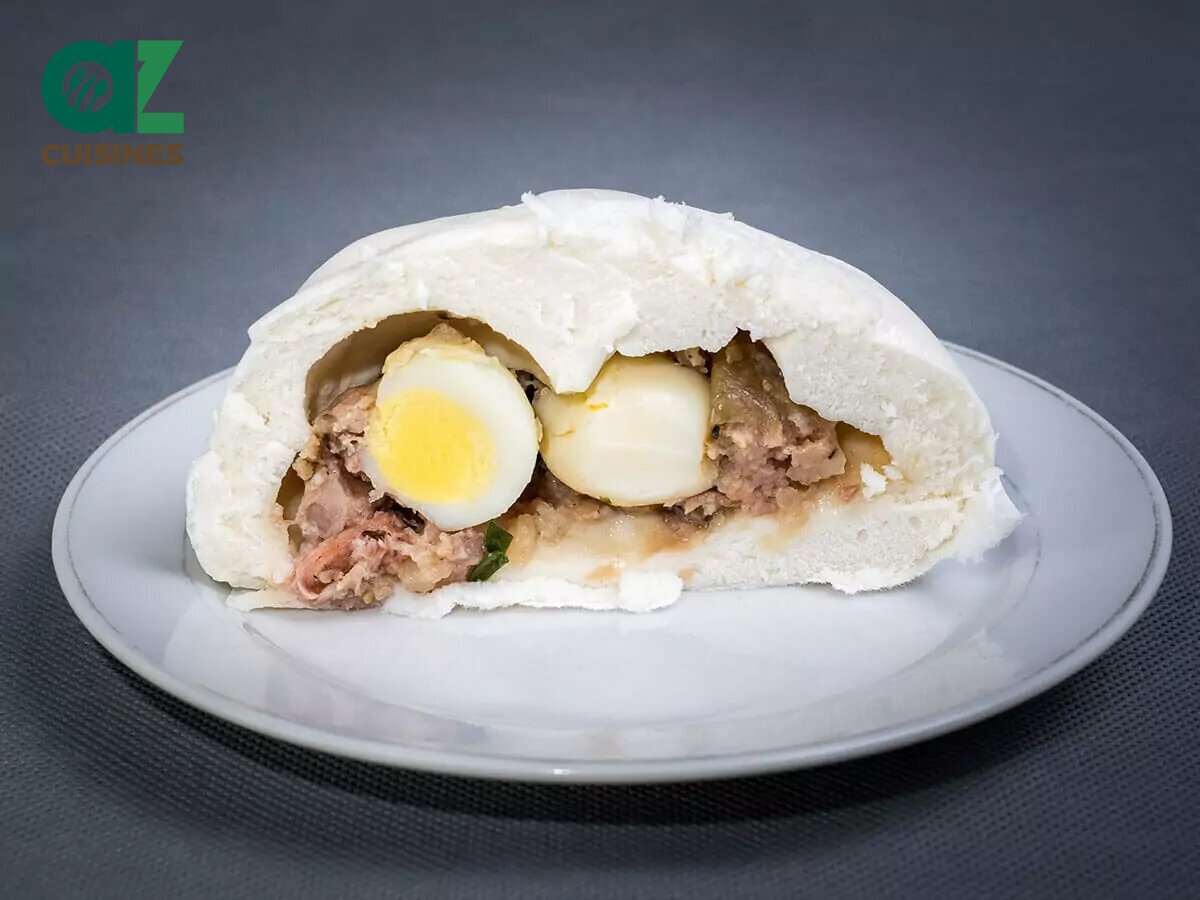
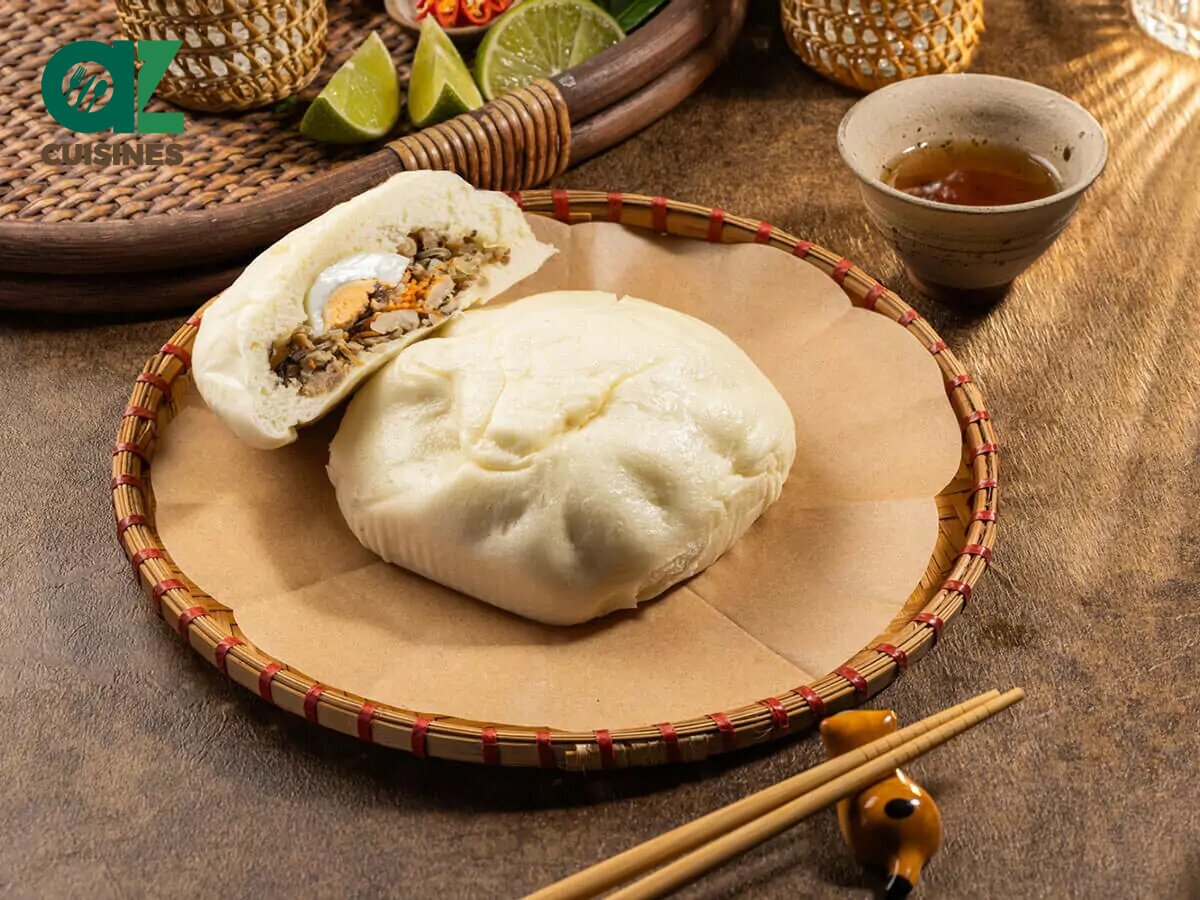
Truc Tran (Kris)
Senior Food Editor
Expertise
Home Cooking, Meal Planning, Recipe Development, Baking and Pastry, Food Editor, Cooking-video Maker, Vietnamese Food Evaluation Expert
Education
Truc Tran (Kris), an experienced food writer and editor, is great at exploring and describing global cuisines, from simple street food to fancy dining. In her writing, she skillfully mixes different flavors, cooking methods, and culinary traditions, showing the unique character of various cultures through their food and drinks. On azcuisines.com, Kris highlights her knowledge, especially in Asian cuisine and worldwide traditional dishes.